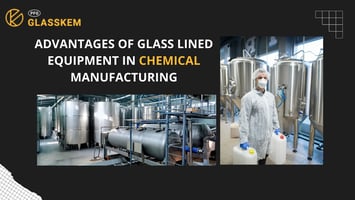In today's world, where environmental concerns are more prominent than ever, industries are...
Safety Considerations When Working with Glass-Lined Reactors
Glass-lined reactors are essential in many industrial processes due to their excellent chemical resistance, durability, and ability to maintain product purity. However, working with these reactors requires stringent safety measures to ensure both operator safety and equipment longevity. Here are some critical safety considerations to keep in mind when working with glass-lined reactors.

Understanding the Equipment
Before operating a glass-lined reactor, it is crucial to have a thorough understanding of its design, functionality, and potential risks. This includes familiarizing yourself with the operating manual and undergoing proper training. Knowledge about the equipment's limitations and the specific chemicals being used can prevent accidents and enhance overall safety.
Regular Inspection and Maintenance
Routine inspection and maintenance are vital to ensure the integrity of the glass lining and the overall functionality of the reactor. Regularly checking for signs of wear, corrosion, or damage can help identify potential issues before they become serious problems. Partnering with a reputable glass-lined reactor manufacturer can provide access to high-quality maintenance services and spare parts, ensuring that your reactor remains in optimal condition.
Proper Handling and Installation
The installation and handling of glass-lined reactors require special care to prevent damage to the glass lining. Any impact or excessive stress can cause cracks or chips, compromising the reactor's safety and efficiency. Ensuring that the reactor is installed by professionals and handled according to the manufacturer's guidelines can mitigate these risks.
Chemical Compatibility
One of the primary benefits of glass-lined reactors is their resistance to a wide range of chemicals. However, it is essential to verify the compatibility of the chemicals being processed with the glass lining. Certain chemicals, especially those at extreme pH levels, may require specific types of glass linings. Consulting with a glass-lined equipment manufacture can provide valuable insights into chemical compatibility and help select the appropriate lining for your needs.
Safety Protocols and Emergency Procedures
Implementing comprehensive safety protocols and emergency procedures is critical when working with glass-lined reactors. This includes proper training for all operators, clear labeling of hazardous materials, and the use of personal protective equipment (PPE). Additionally, having an emergency response plan in place can minimize the impact of accidents or chemical spills, protecting both personnel and equipment.
Monitoring and Control Systems
Advanced monitoring and control systems can enhance the safety of glass-lined reactors by providing real-time data on temperature, pressure, and other critical parameters. These systems can detect deviations from normal operating conditions and trigger alarms or automatic shutdowns to prevent accidents. Investing in state-of-the-art control systems can significantly improve safety and operational efficiency.
Conclusion
Safety is a paramount concern when working with glass-lined reactors. By understanding the equipment, conducting regular maintenance, ensuring proper handling, verifying chemical compatibility, implementing robust safety protocols, and utilizing advanced monitoring systems, you can create a safe working environment and prolong the lifespan of your reactors.
For the highest standards of safety and performance, consider collaborating with a trusted glass-lined reactor manufacturer. Their expertise and quality products can provide the assurance needed to operate your reactors safely and effectively. Additionally, working with a leading glass-lined equipment manufacture can offer advanced solutions and support, further enhancing the safety and efficiency of your industrial processes.
Ensuring safety when working with glass-lined reactors not only protects personnel but also optimizes production outcomes, making it a crucial aspect of any manufacturing operation.



